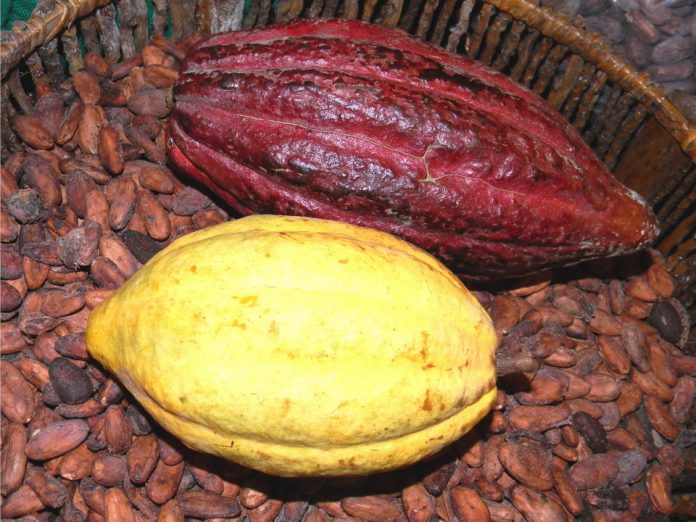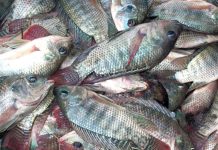Cacao production around the world is on decline. That’s good news for the Philippines, which can be a major producer as the crop grows well in the country. This is particularly true in Davao Region, which has been declared recently as “Cacao Capital.”
Last May 27, President Rodrigo R. Duterte signed Republic Act 11547 recognizing Davao’s contribution as the country’s top cacao producer. Data from the Philippine Statistics Authority from 2015 to present showed the regional yields contribute an average of 80% to the total volume produced throughout the country.
In the same law, Davao City was also declared as “Chocolate Capital” for “making the Philippines world renowned and sought after by chocolate makers from the United States, Japan, and Europe.”
Davao cacao beans have been selected as one of the top 50 samples for the 2017 Edition of the Cacao of Excellence Programme, the entry point for the International Cacao Awards in Paris, France.
In 2019, Davao City produced 2,289 metric tons of cacao, or 38% in the regional share, according to the Department of Agriculture.
The climate of Davao is very suitable for cacao growing. After all, cacao originated from the lowland rainforest of north-eastern South America where wild varieties are found. It is an understory tree that requires shade, wind protection, and at least 100 millimeters of rainfall per month.
In order for the Philippines to become a major producer, it has to expand the areas planted to cacao. The Philippine Council for Agriculture, Aquatic and Natural Resources Research (PCAARRD) has recently published Sustainability Assessment of Rubber and Cacao in Major Production Areas of the Philippines.
According to the publication, which used geographic information system, remote sensing and other inventory techniques in gathering the data, cacao is highly suitable in 8% of Davao de Oro, including the towns of Maragusan, Maco, New Bataan, and parts of Nabunturan.
In Davao del Sur and Davao Occidental, 80% of the area is moderately suitable for cacao, while only 8% of the whole province can be considered as highly suitable, particularly Davao City, Bansalan, and parts of Digos City, Santa Cruz, Malalag, and Kiblawan.
About 53% of Davao Oriental is moderately suitable for cacao while 10% of the province is highly suitable. The municipalities of Lupon, Tarragona, Mati City, San Isidro, and Governor Generoso are identified as highly suitable areas.
Cacao can also be grown in Agusan del Sur, where about 2% is highly suitable, particularly in the municipalities of Esperanza, San Luis, Bayugan City, and a small portion in Rosario. Some 47% of the total land area of the province is moderately suitable for cacao.
In Basilan, cacao is highly suitable in 11% of the province, which include the cities of Lamitan and Isabela, Al-barka, Tipo-tipo, and Akbar. About 72% of the island is moderately suitable for cacao.
Cacao is highly suitable in 11% of Bukidnon’s total land area, clustered in the towns of Baungon and Talakag. Other towns where cacao is highly suitable but in scattered areas are Pangantucan, Malaybalay City, Don Carlos, Kalilangan, Kadingilan, Kitao-kitao, and Valencia City.
Although 55% of Palawan – touted as the country’s last frontier – is restricted to cacao, none is considered as highly suitable to it. The remaining areas are either low or moderately suitable for cacao.
Chocolates come from the seeds of cacao (called cocoa), which was first cultivated by the Mayans around the 7th century A.D. Known in the science world as Theobroma cacao, cacao literally means “Food of the Gods” in Greek.
The Mayans carried the seed north from the tropical Amazon forests to what is now Mexico. In the 16th century, the Spanish planted cacao across South America, into Central America, and onto the Caribbean Islands. In the 17th century, the Dutch transported the cacao to other places around the globe like Java, Sumatra, Sri Lanka, New Guinea, and the Philippines.
“In 1670, Spanish mariner Pedro Bravo de Lagunas planted the first cacao in San Jose, Batangas,” reports The Philippines Recommends for Cacao. After that, cacao growing flourished in various parts of the country – until pod rot wiped out plantations of it.
In the 1950’s, the imposition of Import Control Law resulted in efforts to revive the industry by inter-governmental agencies and by the private sector for self-sufficiency and export. By the time the industry was booming, pod borer infestation surfaced. Control of the disease was quite expensive. As a result, established plantations were again wiped out; others were abandoned.
This particularly happened in Mindanao, where most of the cacao crops were grown. In 1990, about 18,388 hectares were planted to cacao, according to the Department of Agriculture.
By 2006, the area declined to less than 10,000 hectares. During this period, production fell from 9,900 tons to about 5,400 tons, with two-thirds of the production coming from Davao region alone.
As production plummeted in the Philippines, demand for cocoa beans in the international market continues to grow. In 2010, the annual world market requirement was 3.6 million tons of cocoa beans. The demand was growing annually by 90,000 tons.
Cocoa beans are a major agricultural commodity traded worldwide. The European Union and the United States are the two biggest finished chocolate product consumers, accounting for three-quarters of total chocolate consumption, according to a position paper written by Adam Keatts and Christopher Root. Other significant chocolate consumers are Russia, Japan, and Brazil.
“Though the majority of cacao is consumed in North America and Europe, demand is growing more rapidly in Asia where strong economic growth, particularly in India and China, is resulting in more people being able to afford luxury foodstuffs such as chocolate,” Keatts and Root wrote.
A report on the cacao industry by the Department of Trade and Industry in 2012 showed an encouraging increase of gate price from P57.05 per kilogram in 2007 to P88.80 per kilogram in 2011.
There are actually four types of cacao but only three are grown in the country. These are Criollo, Forastero and Trinitario. Nacional, a member of the Forastero family, is widely grown in Ecuador and is highly susceptible to insect pests and diseases.
Criollo, the native cultivar, is less common yet considered to be the best in flavor and aroma compared with other cacao cultivars. Although the chocolate derived from this type is of the highest quality, it is not grown extensively as it is difficult to maintain due to its low yield and susceptibility to diseases.
Literally translated as “stranger” or “foreign,” Forastero is the most commonly grown. It has purple beans that have a harsh flavor and bitter taste. It grows faster and produces higher yield than other types.
As its originally comes from the island of Trinidad, Trinitario is a cross breed of Forastero and Criollo. It got its fine flavor and aroma from Criollo and its resistance to pests and diseases and good quality fruits from Forastero.
Here are some timely tips on growing cacao from The Philippines Recommends for Cacao:
• The use of seeds is the best method of planting cacao. Seeds must be selected carefully and must come from big pods obtained from trees which are highly productive, regular bearers and free from pests. Seeds must be planted immediately since their viability is limited.
• Seedlings to be retained in the nursery for 3-4 months must be raised in polyethylene bags. The seedlings are shaded both above and at the sides for protection against strong winds. Coconut palm fronds can be used for this purpose.
• Transplanting can be done when the shoots become mature and the leaves become hard and dark green. Utmost care is necessary in transporting as the seedlings are very prone to transplanting shock.
• Care should be taken to remove the polyethylene container with minimal disturbance. Seedlings are to be planted at the same depth as they were in the polyethylene bags. Topsoil is poured into the hole a few centimeters at a time and then carefully pressed down.







